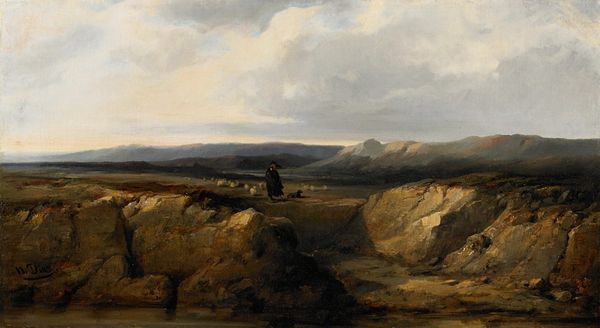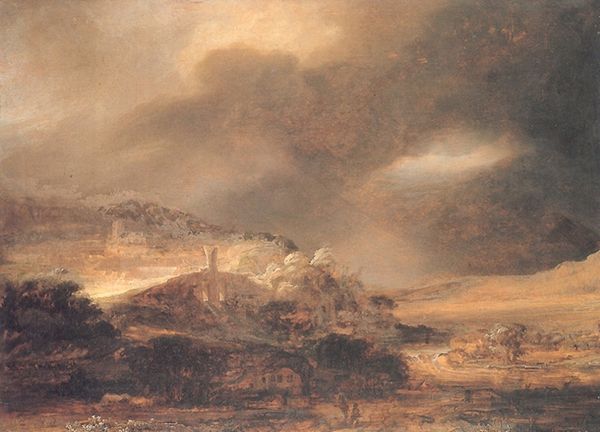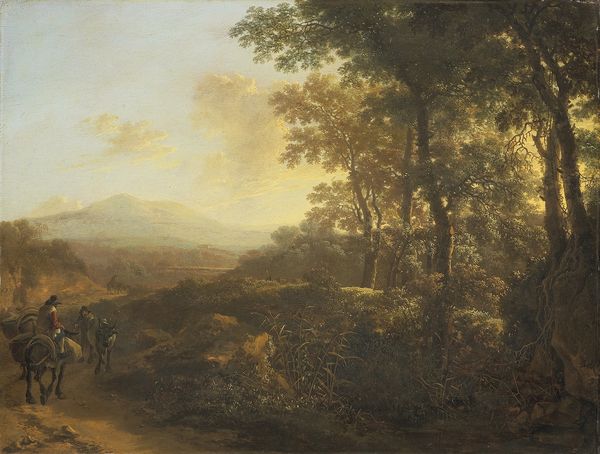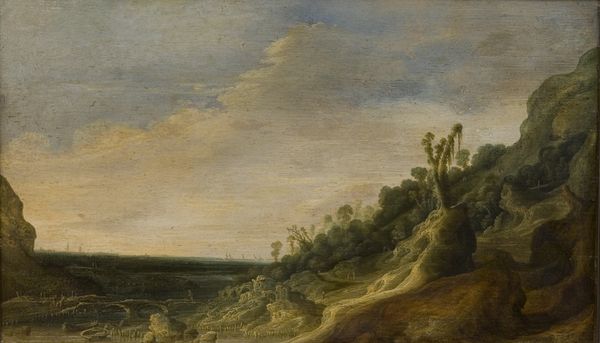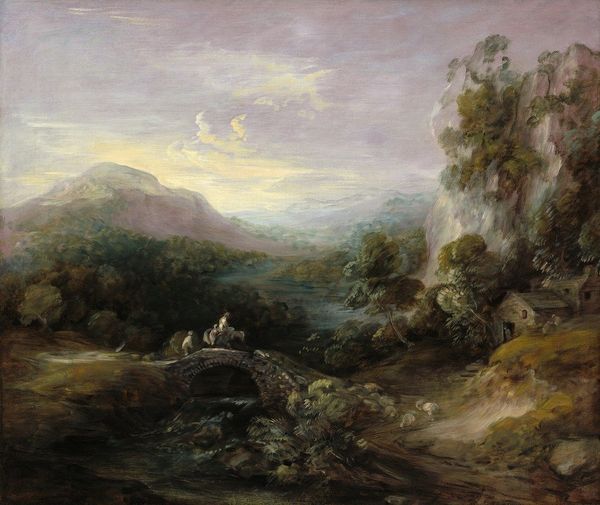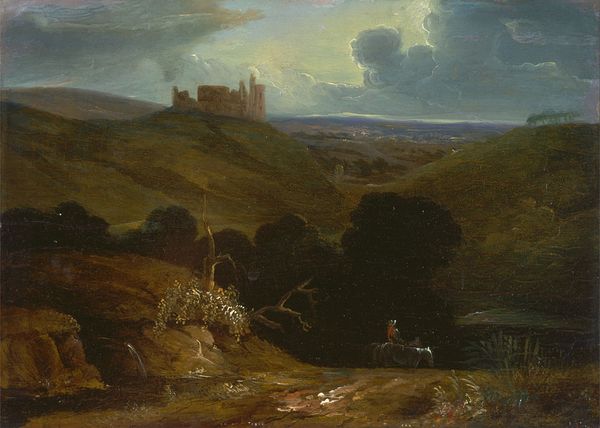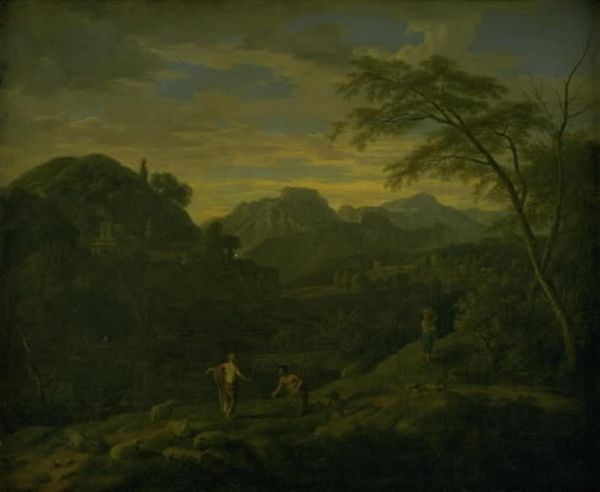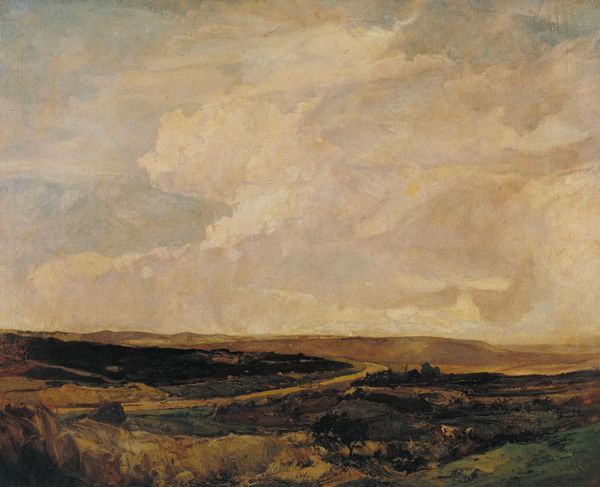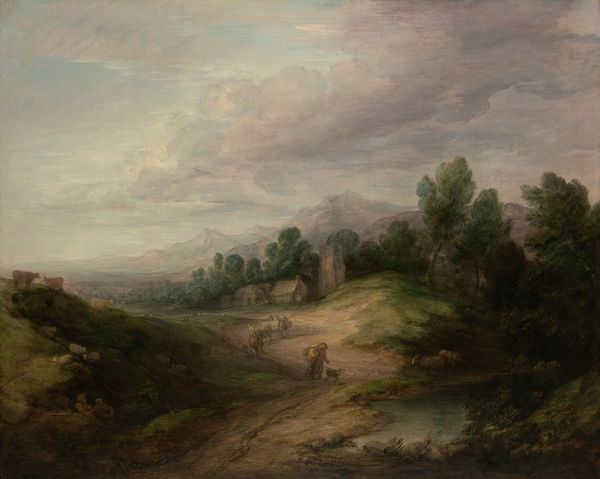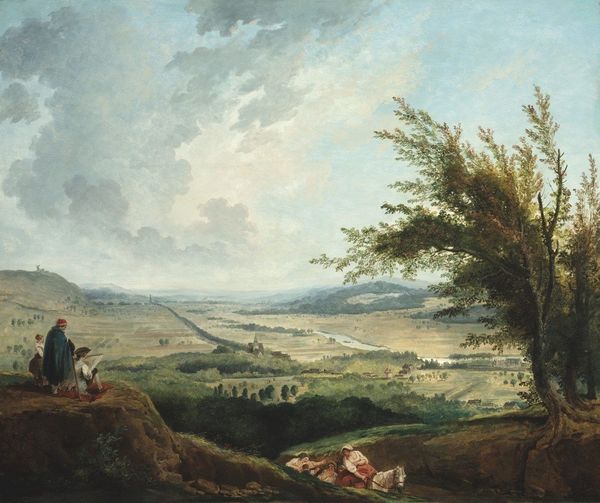
Copyright: Public Domain: Artvee
Elihu Vedder painted this landscape of Umbria, seemingly without date, capturing the moment before a storm. The looming storm, with its roiling clouds and darkened landscape, evokes a feeling of unease and anticipation, a visual omen that taps into our primal fear of the unpredictable power of nature. Consider how the storm motif has been used across cultures and eras. From the wrathful storms of ancient mythology, like Zeus’s thunderbolts, to the sublime terror depicted by Romantic painters, the storm represents chaos, change, and the overwhelming force of nature. Here, in Vedder’s work, we see a continuation of this tradition. The lone figure in the landscape is a powerful reminder of human vulnerability, the ever-present tension between man and nature. This motif is a part of our collective memory, resurfacing and evolving through art history, literature, and folklore, shifting from divine retribution to a symbol of psychological turmoil. We see how it engages our subconscious, triggering a deep, primal understanding of our place in the world.
Comments
No comments
Be the first to comment and join the conversation on the ultimate creative platform.
